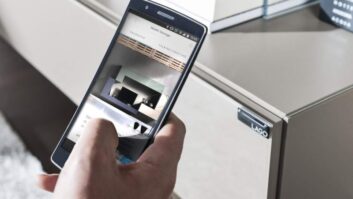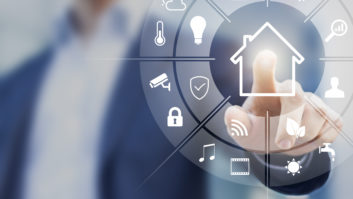After pouring Simply Smart milk on my Smart Start cereal, I turned on my Smart TV.
Smartness shouldn’t be applied so loosely. Ever train a glass of milk or teach a flake anything? Only the TV has the inherent smarts to learn and grow. A TV is smart because it is well-connected. Attached to the Internet, the set has the brains to access a wide range of services and have its firmware upgraded even as we on the couch dumb down.
What makes a smart TV especially attractive is its aptitude for non-linear program acquisition. Unlike broadcast and cable channels that arrive on their schedule, a smart TV is all about on-demand. Consumers are already used to controlling when they see something on their computers, smartphones and DVRs. A smart TV that lets you access Netflix, YouTube, Hulu Plus and a thousand other services that hang their shingles in the cloud make conventional broadcasting seem passé.
Smart TVs have the potential to help viewers unbundle those onerous cable and satellite packages in which we’re billed for channels we never watch. Once enough smart TVs have settled into households, they could help lift the couch potato class off the sofa and unshackle us from taxation without representation.
While smart TVs are mainly about leveraging remote servers, they’re also about user interface. When the dumbest generation of TV sets were herald as modern marvels some 60 years ago, not only couldn’t you take a bathroom break as desired but you had to walk over to the dial and click past channels you didn’t want to watch to reach the one you did. Today’s smart TVs can be operated with a tap to your phone or tablet. They can be controlled by your voice and commanded with a hand gesture. The TV’s built-in camera isn’t just for Skype video calls. It can use face recognition to identify the captain on the couch. You may not even have to touch the remote. Simply tell its smartness to lower the volume. Or use your finger to swipe the air to advance a photo slide show.
Smart TVs are clever. They let you leverage the network — your home network, not CBS — to populate the screen on your own terms. A Wi-Fi-enabled scale can now squat out of sight while beaming your updated weight history to the TV. If that’s not a disincentive for hitting the refrigerator, I don’t know what is. Perhaps you’ll be more motivated to follow an exercise video by splitting the screen between stream and TV cam so you can mimic the instructor’s moves.
A Twitter app lets fans exchange snarky comments about the latest revelation in Revenge as members of your extended group watch the show. Could guilty-pleasure seekers spur the return of appointment television? Will watching quiz shows ever be the same now that smart TVs let you deploy its search engine to discover the Final Jeopardy question even before the jingle runs out? A USB port on the TV lets you plug in your point-and-shoot camera to replay your kid’s birthday party captured minutes earlier. But wait. You already transferred photos and videos to the computer in your home office? Don’t get up! The TV is smart enough to play your media no matter where it resides on the network.
Smart TVs aren’t for everyone. But neither is Smart Balance margarine. The difference is that taste buds may never change. But a TV that’s smart today will be even smarter tomorrow. If 2012 models have dual processors, you can be sure next year’s models will have quad processors and even more gobs of memory. Who knows what new app will download as we sleep? My dachshund is smart, but new tricks aren’t in the old girl’s repertoire. I can’t say the same for my increasingly sophisticated, smart TV.
Michael Antonoff is creative content writer for B&H Photo-Video.













